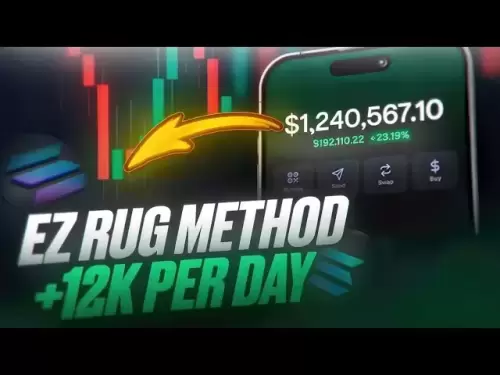-
 Bitcoin
Bitcoin $108,443.4896
0.48% -
 Ethereum
Ethereum $2,597.3843
2.42% -
 Tether USDt
Tether USDt $1.0002
0.02% -
 XRP
XRP $2.3025
1.83% -
 BNB
BNB $661.6147
0.34% -
 Solana
Solana $151.4228
1.80% -
 USDC
USDC $1.0000
0.00% -
 TRON
TRON $0.2877
0.14% -
 Dogecoin
Dogecoin $0.1705
1.56% -
 Cardano
Cardano $0.5848
1.48% -
 Hyperliquid
Hyperliquid $38.8396
3.64% -
 Bitcoin Cash
Bitcoin Cash $507.5891
2.30% -
 Sui
Sui $2.8908
1.27% -
 Chainlink
Chainlink $13.8521
4.52% -
 UNUS SED LEO
UNUS SED LEO $9.1329
0.87% -
 Stellar
Stellar $0.2603
5.49% -
 Avalanche
Avalanche $18.1289
1.71% -
 Shiba Inu
Shiba Inu $0.0...01182
1.89% -
 Toncoin
Toncoin $2.8045
2.20% -
 Hedera
Hedera $0.1601
2.64% -
 Litecoin
Litecoin $87.5825
1.89% -
 Monero
Monero $315.6725
-0.03% -
 Polkadot
Polkadot $3.4216
2.10% -
 Dai
Dai $1.0000
0.00% -
 Ethena USDe
Ethena USDe $1.0007
0.06% -
 Bitget Token
Bitget Token $4.2988
-0.01% -
 Uniswap
Uniswap $7.5739
2.72% -
 Aave
Aave $290.8204
4.41% -
 Pepe
Pepe $0.0...01004
2.03% -
 Pi
Pi $0.4611
1.11%
Does Ledger Nano X support Lightning Network transactions?
The Ledger Nano X does not support Lightning Network transactions natively, but users can use third-party software like BlueWallet or Electrum-LN for this functionality.
Apr 20, 2025 at 01:00 pm
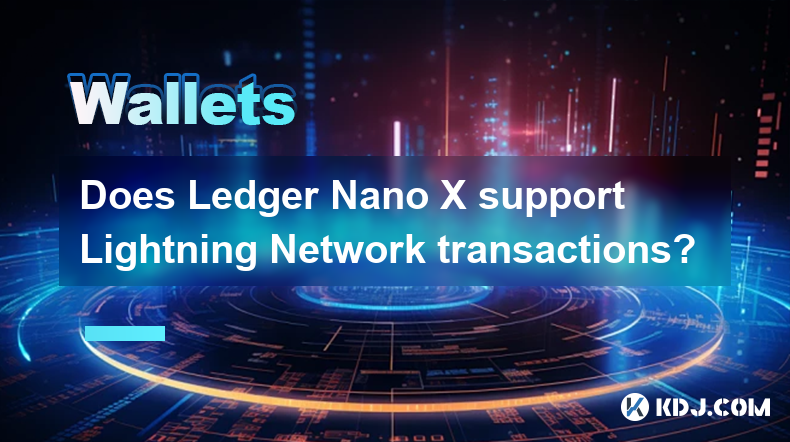
The Ledger Nano X is a popular hardware wallet designed to secure various cryptocurrencies, including Bitcoin. One of the frequently asked questions among its users is whether it supports Lightning Network transactions. In this article, we will explore this topic in detail, providing a comprehensive understanding of the Ledger Nano X's compatibility with the Lightning Network.
What is the Lightning Network?
The Lightning Network is a second-layer scaling solution built on top of the Bitcoin blockchain. Its primary purpose is to facilitate faster and cheaper transactions by creating off-chain payment channels between parties. This network is designed to address the scalability issues of the Bitcoin network, allowing for near-instant transactions with minimal fees.
Ledger Nano X: An Overview
The Ledger Nano X is a hardware wallet developed by Ledger, a company known for its security-focused approach to cryptocurrency storage. The device supports a wide range of cryptocurrencies and features a secure element chip to protect users' private keys. It also offers Bluetooth connectivity, allowing for a more convenient user experience while maintaining high security standards.
Does Ledger Nano X Support Lightning Network Transactions?
As of the latest updates, the Ledger Nano X does not natively support Lightning Network transactions. This means that users cannot directly manage or initiate Lightning Network transactions using the Ledger Live application, the official software provided by Ledger for managing their hardware wallets.
Alternative Solutions for Lightning Network Transactions with Ledger Nano X
While the Ledger Nano X does not support Lightning Network transactions out of the box, there are alternative solutions that users can explore to achieve this functionality. Here are a few options:
Using Third-Party Software
One way to use the Ledger Nano X with the Lightning Network is by integrating it with third-party software that supports Lightning Network transactions. One such software is BlueWallet, a popular mobile wallet that supports Lightning Network functionality.
- Install BlueWallet: First, download and install the BlueWallet app on your mobile device from the respective app store.
- Connect Ledger Nano X: Ensure your Ledger Nano X is connected to your device via Bluetooth. Open the Ledger Live app and navigate to the settings to enable Bluetooth connectivity.
- Add Ledger Wallet to BlueWallet: In BlueWallet, select "Add now" and choose "Ledger Wallet." Follow the prompts to connect your Ledger Nano X to BlueWallet.
- Create a Lightning Wallet: Once connected, you can create a new Lightning wallet within BlueWallet. This wallet will use your Ledger Nano X to manage the private keys securely.
- Initiate Transactions: With the Lightning wallet set up, you can now send and receive Lightning Network transactions using BlueWallet while your funds remain secured by the Ledger Nano X.
Using Electrum with Lightning Network Support
Another option is to use Electrum, a Bitcoin wallet that supports the Lightning Network. While the standard version of Electrum does not support Lightning, there are modified versions available that do.
- Download Electrum-LN: Find and download a version of Electrum that supports the Lightning Network, such as Electrum-LN.
- Install Electrum-LN: Follow the installation instructions provided by the specific version of Electrum-LN you have downloaded.
- Connect Ledger Nano X: Open Electrum-LN and navigate to the settings to add your Ledger Nano X as a hardware wallet. Follow the on-screen instructions to connect your device.
- Set Up Lightning Channels: Once your Ledger Nano X is connected, you can set up Lightning channels within Electrum-LN to start using the Lightning Network.
- Manage Transactions: Use Electrum-LN to initiate and manage Lightning Network transactions, with your private keys securely stored on your Ledger Nano X.
Security Considerations
When using the Ledger Nano X with third-party software to support Lightning Network transactions, it is crucial to consider the security implications. Here are some key points to keep in mind:
- Third-Party Risks: Using third-party software introduces additional risks, as these applications are not developed or officially supported by Ledger. Always ensure you download software from reputable sources and keep it updated.
- Bluetooth Security: If using Bluetooth connectivity, ensure that your device and the Ledger Nano X are in a secure environment to prevent potential man-in-the-middle attacks.
- Regular Backups: Regularly back up your wallet data and ensure you have recovery options in place in case of any issues.
Practical Examples of Using Ledger Nano X with Lightning Network
To provide a better understanding of how the Ledger Nano X can be used with the Lightning Network, let's look at a practical example using BlueWallet:
Scenario: Alice wants to send a small amount of Bitcoin to Bob using the Lightning Network, and she wants to use her Ledger Nano X for security.
Steps:
- Alice installs BlueWallet on her mobile device and connects her Ledger Nano X via Bluetooth.
- She adds her Ledger wallet to BlueWallet and creates a new Lightning wallet within the app.
- Alice opens a Lightning channel with enough funds to cover her transaction to Bob.
- She initiates a Lightning Network transaction to Bob's Lightning wallet address, which is processed almost instantly and with minimal fees.
- Once the transaction is complete, Alice can close the Lightning channel and move her funds back to her on-chain wallet on the Ledger Nano X.
Frequently Asked Questions
Q: Can I use the Ledger Nano X to open and close Lightning channels?
A: While the Ledger Nano X itself does not support opening and closing Lightning channels, you can achieve this functionality by using third-party software like BlueWallet or Electrum-LN, which integrate with your Ledger Nano X for secure key management.
Q: Are there any risks associated with using third-party software for Lightning Network transactions with the Ledger Nano X?
A: Yes, there are risks involved. Using third-party software means you are relying on applications not officially supported by Ledger, which could potentially introduce vulnerabilities. Always ensure you download software from reputable sources and follow best security practices.
Q: How can I ensure the security of my Lightning Network transactions when using the Ledger Nano X with third-party software?
A: To ensure security, always download third-party software from reputable sources, keep your software updated, use Bluetooth connectivity in a secure environment, and regularly back up your wallet data. Additionally, always verify the addresses and transactions before confirming them on your Ledger Nano X.
Q: Is there a native solution from Ledger for Lightning Network support in the future?
A: As of now, there is no official announcement from Ledger regarding native support for Lightning Network transactions on the Ledger Nano X. Users interested in this feature should keep an eye on Ledger's official communications for any updates.
Disclaimer:info@kdj.com
The information provided is not trading advice. kdj.com does not assume any responsibility for any investments made based on the information provided in this article. Cryptocurrencies are highly volatile and it is highly recommended that you invest with caution after thorough research!
If you believe that the content used on this website infringes your copyright, please contact us immediately (info@kdj.com) and we will delete it promptly.
- Crypto Whale's Portfolio: Decoding Token Stashes and Emerging Trends
- 2025-07-09 08:30:12
- Rare Coin, Lucky Find, Valuable Coin: Unearthing Treasures in Everyday Change
- 2025-07-09 08:30:12
- Coinbase, Altcoins, and the Empire State: A New Era for New York Crypto?
- 2025-07-09 09:30:12
- HTX, WLFI, and Stablecoins: Navigating the Future of Digital Finance
- 2025-07-09 08:50:12
- ADA Whale Activity: Big Wallets Eyeing Cardano for a Breakout?
- 2025-07-09 09:30:12
- Bitcoin: Holding Still Pays Off, Ya Know?
- 2025-07-09 09:30:13
Related knowledge

How to connect Trezor to Rabby wallet
Jul 09,2025 at 05:49am
What Is Trezor and Rabby Wallet?Trezor is a hardware wallet developed by SatoshiLabs that allows users to securely store their cryptocurrency assets o...

What happens if I forget my Trezor passphrase
Jul 09,2025 at 03:15am
Understanding the Role of a Trezor PassphraseIf you use a Trezor hardware wallet, you may have set up a passphrase as an extra layer of security beyon...
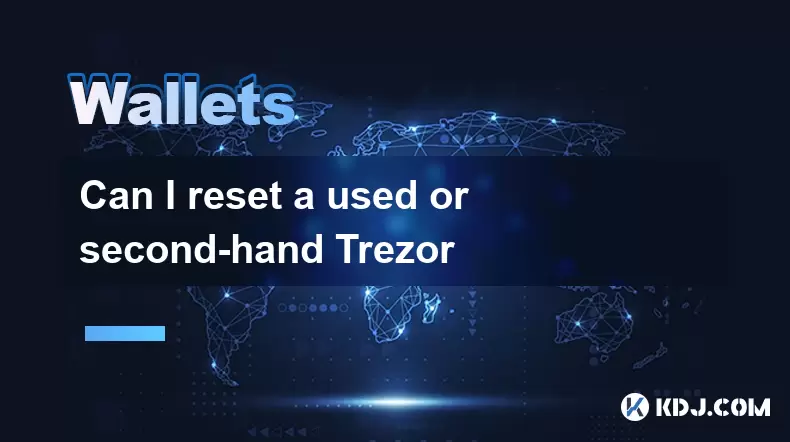
Can I reset a used or second-hand Trezor
Jul 09,2025 at 11:49am
Understanding the Reset Process for a Used or Second-Hand TrezorIf you have acquired a used or second-hand Trezor wallet, one of the first things you ...
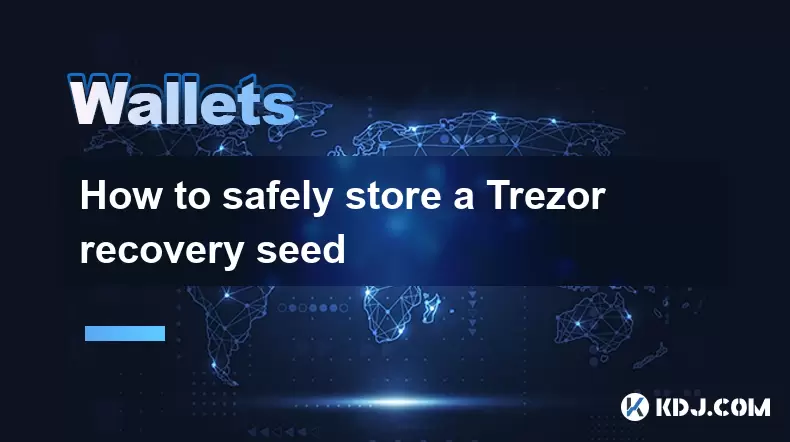
How to safely store a Trezor recovery seed
Jul 09,2025 at 11:22am
Understanding the Importance of a Trezor Recovery SeedA Trezor recovery seed is a sequence of 12 or 24 words generated during the initial setup of you...
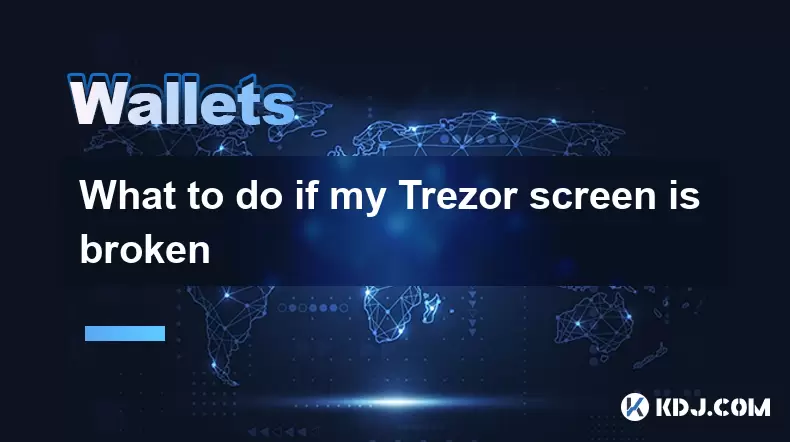
What to do if my Trezor screen is broken
Jul 09,2025 at 10:36am
Understanding the Impact of a Broken Trezor ScreenIf your Trezor screen is broken, it can significantly affect how you interact with your cryptocurren...
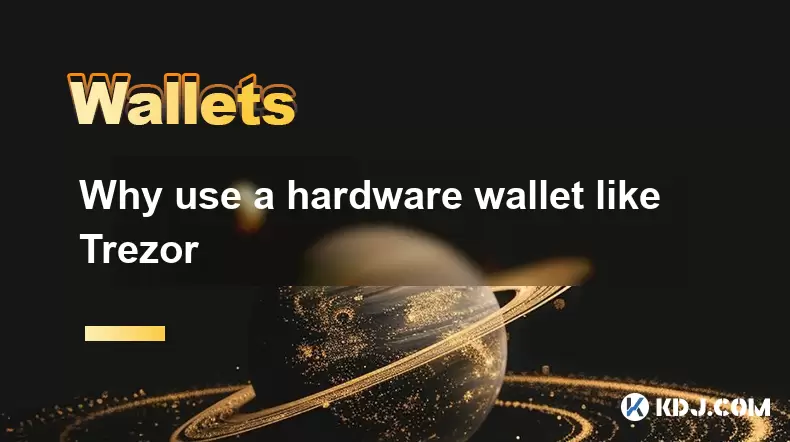
Why use a hardware wallet like Trezor
Jul 09,2025 at 11:00am
What Is a Hardware Wallet and Why It MattersA hardware wallet is a physical device designed to securely store the private keys of cryptocurrencies off...

How to connect Trezor to Rabby wallet
Jul 09,2025 at 05:49am
What Is Trezor and Rabby Wallet?Trezor is a hardware wallet developed by SatoshiLabs that allows users to securely store their cryptocurrency assets o...

What happens if I forget my Trezor passphrase
Jul 09,2025 at 03:15am
Understanding the Role of a Trezor PassphraseIf you use a Trezor hardware wallet, you may have set up a passphrase as an extra layer of security beyon...

Can I reset a used or second-hand Trezor
Jul 09,2025 at 11:49am
Understanding the Reset Process for a Used or Second-Hand TrezorIf you have acquired a used or second-hand Trezor wallet, one of the first things you ...

How to safely store a Trezor recovery seed
Jul 09,2025 at 11:22am
Understanding the Importance of a Trezor Recovery SeedA Trezor recovery seed is a sequence of 12 or 24 words generated during the initial setup of you...

What to do if my Trezor screen is broken
Jul 09,2025 at 10:36am
Understanding the Impact of a Broken Trezor ScreenIf your Trezor screen is broken, it can significantly affect how you interact with your cryptocurren...

Why use a hardware wallet like Trezor
Jul 09,2025 at 11:00am
What Is a Hardware Wallet and Why It MattersA hardware wallet is a physical device designed to securely store the private keys of cryptocurrencies off...
See all articles


























